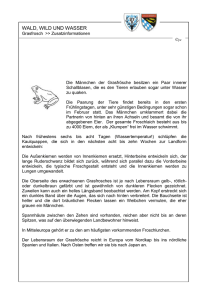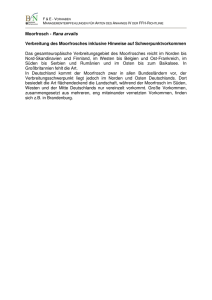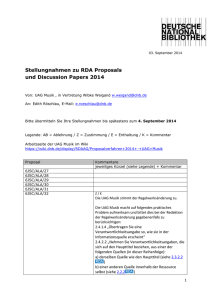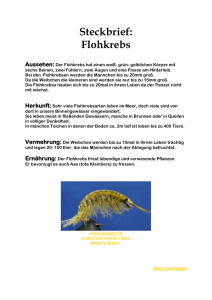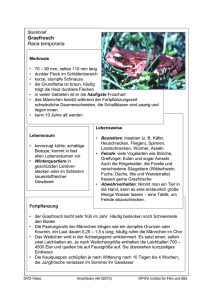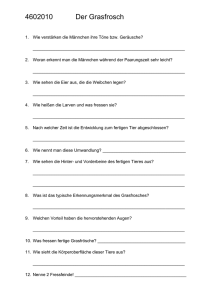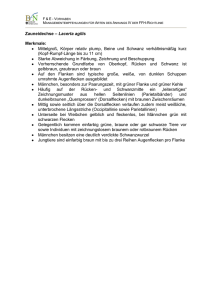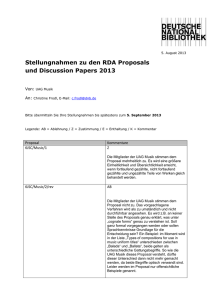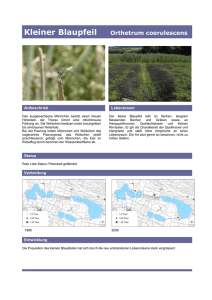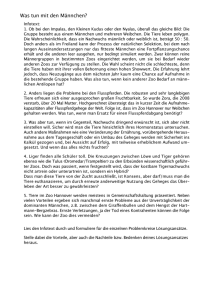Der Moorfrosch
Werbung
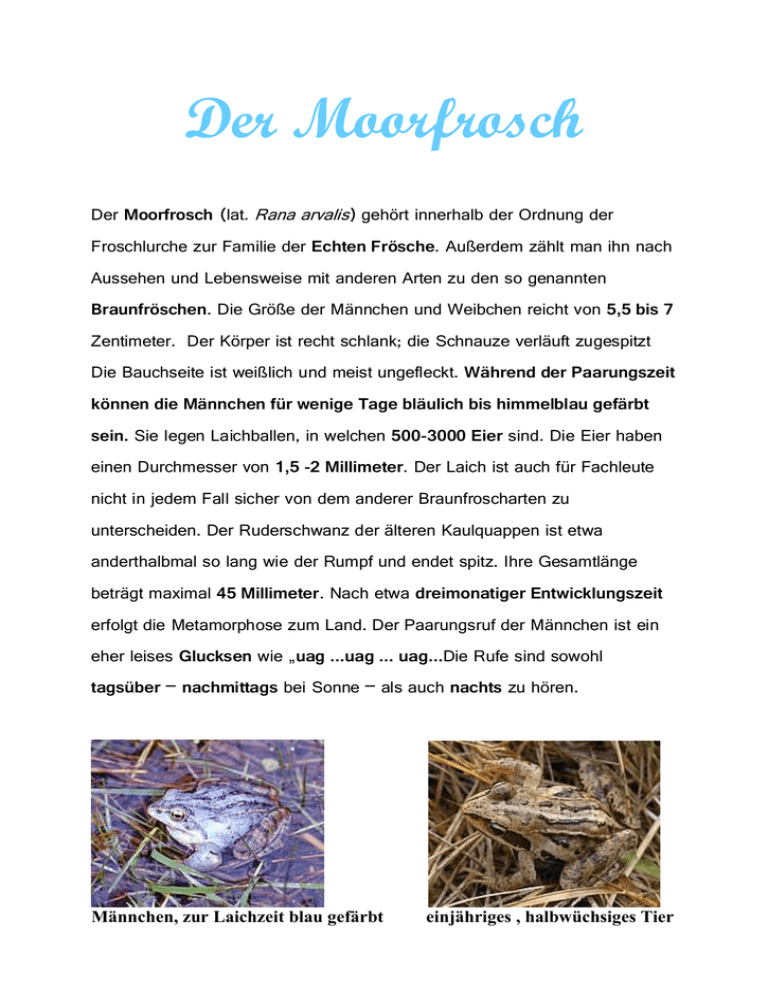
Der Moorfrosch Der Moorfrosch (lat. Rana arvalis) gehört innerhalb der Ordnung der Froschlurche zur Familie der Echten Frösche. Außerdem zählt man ihn nach Aussehen und Lebensweise mit anderen Arten zu den so genannten Braunfröschen. Die Größe der Männchen und Weibchen reicht von 5,5 bis 7 Zentimeter. Der Körper ist recht schlank; die Schnauze verläuft zugespitzt Die Bauchseite ist weißlich und meist ungefleckt. Während der Paarungszeit können die Männchen für wenige Tage bläulich bis himmelblau gefärbt sein. Sie legen Laichballen, in welchen 500-3000 Eier sind. Die Eier haben einen Durchmesser von 1,5 -2 Millimeter. Der Laich ist auch für Fachleute nicht in jedem Fall sicher von dem anderer Braunfroscharten zu unterscheiden. Der Ruderschwanz der älteren Kaulquappen ist etwa anderthalbmal so lang wie der Rumpf und endet spitz. Ihre Gesamtlänge beträgt maximal 45 Millimeter. Nach etwa dreimonatiger Entwicklungszeit erfolgt die Metamorphose zum Land. Der Paarungsruf der Männchen ist ein eher leises Glucksen wie „uag ...uag ... uag...Die Rufe sind sowohl tagsüber – nachmittags bei Sonne – als auch nachts zu hören. Männchen, zur Laichzeit blau gefärbt einjähriges , halbwüchsiges Tier The Green Moor Frog Within the order of the amphibian, the moor frog (lat. Rana arvalis) is a member of the family Ranidae, or "true frogs". In addition, it belongs – due to its appearance and life-style - to the so-called brown frogs. Males and females are from 5.5 to 7 centimetres in length. The body is quite slim; the mouth is rather tapered. The belly is whitish and mostly unspotted. During the mating season the males' colour might change for a few days into bluish or sky azure. The spawn of each frog is laid in clusters of 500-3000 eggs. The eggs have a diameter of 1.5-2 millimetres. Even experts cannot distinguish the spawn with certainty from that of other species of brown frogs. The tail fin of the older tadpoles is one and a half times the length of the body and it is also tapered. The total length amounts to 45 millimetres at most. The development period lasts for about 3 months. Then metamorphosis takes place on land. The male mating call somehow sounds like a quiet chortling sound like “uag...uag...uag”. The calls are to be heard during the day, in the afternoon when it is sunny as well as at night. Male, during mating time young male
